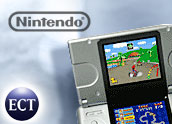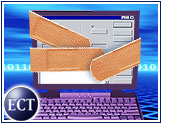
If you’re already confused by the proliferation of digital music types and don’t know the difference between a DVD-R, DVD+R, or DVD-RW, get ready for the next assault. The good news is that digital television and the resulting high-definition DVD technology will be a vast improvement over the images we typically see on TV today. The bad news is that once again there is no standardized format, so compatibility remains an issue.
Hollywood studios, however, are beginning to take sides. Toshiba’s next-generation technology, known as HD DVD, is the format of choice for Warner Bros. Studios, Paramount Pictures, Universal Pictures and New Line Cinema. Meanwhile, Sony, Dell and Samsung, among others, favor Blu-ray, a competitive technology. As one might expect, Blu-ray has the backing of Sony Pictures, and in all likelihood, Metro-Goldwyn-Mayer, which has recently been acquired by a group led by Sony. Twentieth Century Fox is also thought to be in this camp.
Array of Formats
Both technologies use blue lasers, which allow discs to store data at the densities necessary for high definition. Since Congress has mandated that television stations in the United States switch to digital broadcasting, many DVD players and recorders will have to be replaced. Royalties from licensing the technology will further sweeten an already lucrative pot. DVD equipment is currently a US$10 billion a year market.
“We’ve been through the digital revolution in many ways already — from LPs to compact discs and from VHS to DVD,” says Jeff Joseph, vice president of communications for the Consumer Electronics Association. “High definition is an important step forward, and we expect to see high definition consumer products by the fourth quarter of next year, even though there are competing formats now.”
Such an array of confusing choices means that consumers will have to do their homework. According to Joseph, “the marketplace often determines the surviving format. Another thing that happens is that formats that start off as incompatible become compatible, such as we’ve seen with CDs and SACDs [Super Audio Compact Discs]. You’ll begin to see dual-format players or equipment that can playback a wide variety of formats.”
Issues at Hand
In addition, Toshiba and Memory-Tech have announced a dual-layer DVD they claim can play both on today’s equipment and on high-definition players.
“Manufacturers are going to protect the legacy of their devices because no one wants angry consumers,” predicts Joseph. “The big issue will be copy protection and how it’s handled.”
With Hollywood studios concerned about losing profits to illegal distribution over the Internet, and consumers demanding the right to make legal copies for their own use, the protection issue is one more issue yet to be resolved.
Changing Landscape
Television stations will continue to provide analog programming until the end of 2006, and probably beyond. The date is likely to be extended until a majority of U.S. homes are able to receive the digital signal. Even when analog broadcasting ends, you’ll still be able to get a signal on older sets by purchasing a digital-to-analog converter box. Cable companies are also likely to offer the decoding as an additional feature of their converter boxes.
In the meantime, the FCC has established a Web site to help consumers who want to learn more about the coming changes.
And if you’re thinking about a new television for the holidays, Joseph has some advice. “Don’t buy a regular TV today, because analog broadcasting will end sometime within the next five years. Buy HDTV instead.” Since the digital sets generally have wider, more rectangular screens, he said, “Be sure to measure before you buy.”



















































Finally, DVD players have reached a price-point where most people can afford them. And, DVD recorders are reaching a price-point that threatens the future of VHS recorders. Industry’s answer to that? Create a new DVD format to make the old format obsolete.
_
This is typical. The home electronics industry has been steadily nudging us toward the next new thing. But this time around, there’s a difference … and Toshiba and film studios are proceeding cautiously. While they may say they’re putting DVD content on one side of the disk and HD-DVD content on the other to encourage people to make the format transition, I suspect there’s another reason … that they’re worried the consumer will not make the leap.
_
No, I’m not saying people don’t want the next best thing. They always do. What I AM saying is that earning power in the U.S. is eroding. Blue collar jobs are being relocated overseas and the jobs replacing them pay less … all at a time when costs for energy, health care, and God knows what else are going up. So, while white collar earners might be able to afford this upcoming new format, a lot of blue collar earners are hanging onto their VCRs … not wanting to upgrade to a DVD format they know the industry plans to sunset.
_
It’s also well to note that, all the while, when those who can afford the technology are salivating over the possibility of being the first on their block to have it, the industry remains in motion. And deep in the bowels of Toshiba’s R&D department (and other R&D departments), they’re surely working on the "UD-DVD" format that will make HD-DVD obsolete … and possibly even laying the groundwork for the successor to UD-DVD.
_
P.S. I’m speaking as a person who, back in the early seventies, laid out a considerable AM ount of money on what the industry told me was the next new thing – Quadraphonic Stereo. I bought the SQ decoders from Sony to cover the SQ technology offerings and a JVC 4-channel receiver/amp with four speakers to handle it … as well as the Discrete technology JVC championed. And as we all know, SQ and Discrete quadraphonic stereo technology now rests in the graveyard of home entertainment systems. The consumer didn’t "jump" back then … and it’s possible they won’t "jump" now either.